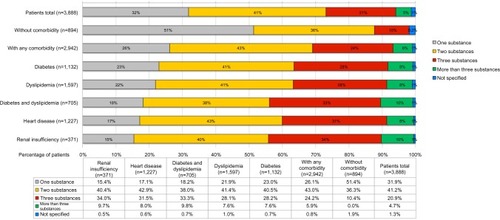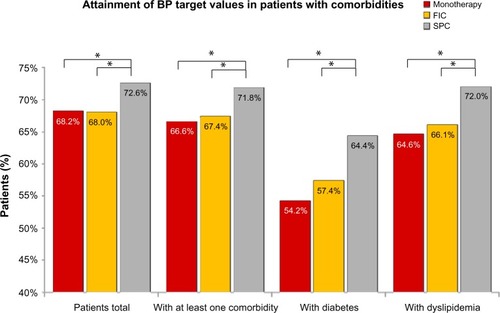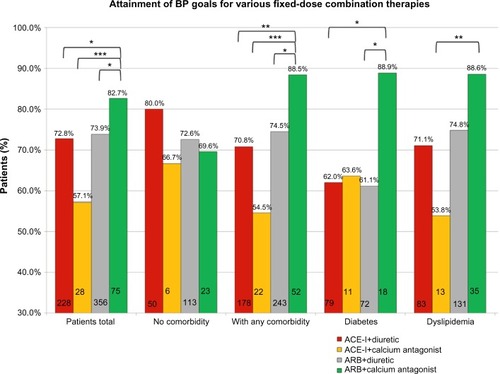Figures & data
Figure 1 Percentage of patients receiving antihypertensive combination therapy increases with comorbidities. The number of substances taken by patients is plotted as a function of comorbidities.

Table 1 Usage of antihypertensive substances in Swiss primary care offices. The percentage of patients receiving given substance(s) and the respective combination mode (individual or single-pill) is indicated as percentage of the total population. Note that only combinations prescribed to more than 50 patients are shown
Figure 2 Antihypertensive SPC are associated with higher effectivity than FIC and monotherapy.
Abbreviations: BP, blood pressure; FIC, free individual combinations; SPC, single-pill combinations.

Figure 3 Single-pill combinations of two substances comprised of an ARB and a calcium antagonist are associated with higher effectivity than other such combinations in the whole population and certain comorbidity subgroups. The percentage of patients attaining their individual BP targets is shown for the general population and the subgroups of comorbid patients as well as patients suffering from either diabetes or dyslipidemia. The numbers inside the columns are absolute patient numbers. *P<0.05; **P<0.01; ***P<0.001.


